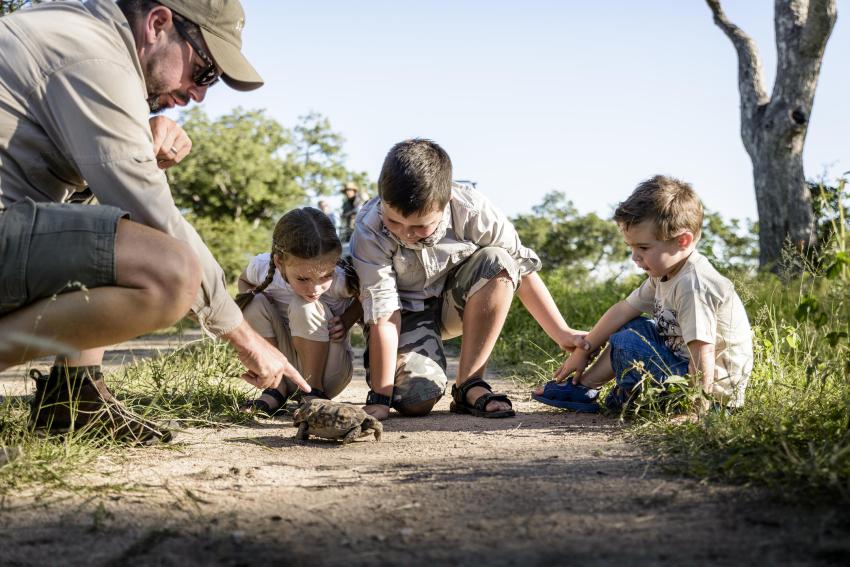Preparing for a safari in Africa is unlike any other family vacation. Not only do you need to dress for the outdoors but in materials and colours that will keep you comfortable and camouflaged throughout the day. The remote setting of many safari lodges and camps means you need to come equipped with everything you need (there are no quick trips to the shop to pick up forgotten items), all while keeping your luggage under the 15-kilogram luggage restriction of small bush aircraft.
All of this may sound like an impossible feat! But in reality, it’s easier than you might think. With a little forward planning and restraint in what you pack, you’ll have all the necessary safari gear for families and nothing you don’t need.
In this article, we’ll detail everything you need to pack in our family safari packing list, from the type of clothing to electronics and medical supplies. We’ll also explain what a typical day on safari looks like to give you a better sense of what activities you’ll be doing and help you plan (and pack) accordingly. This will include insights on weather expectations and wildlife sightings - everything you need to embark on your African family safari feeling 100% prepared.
What to pack for a family safari
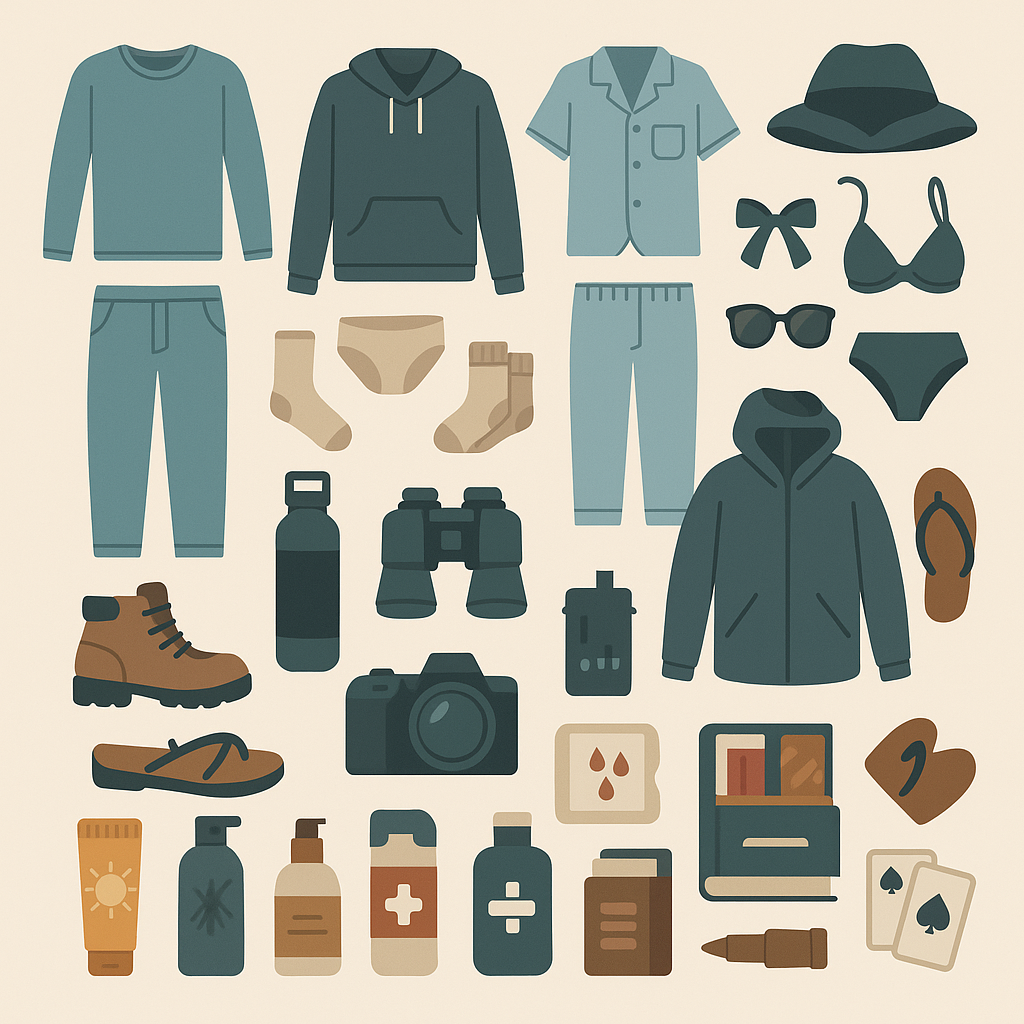
When planning a safari to Africa with kids, it's important to pack the right clothing and safari gear for families to keep you and your children comfortable and safe. Lightweight, breathable fabrics in neutral shades like khaki, beige and olive green are ideal as they blend in with the environment and help you stay cool in the heat.
Long-sleeved shirts and pants are vital for protecting your skin from the sun, as well as biting insects during game drives or nature walks. Don't forget a wide-brimmed hat to shield your face and neck, plus a pair of comfortable walking shoes or hiking boots for exploring the nature trails.
Along with suitable clothing and a swimsuit for the camp/lodge pool, be sure to pack any necessary toiletries, a high-SPF sunscreen and a good insect repellent to keep mosquitoes and other bugs at bay. A well-equipped first-aid kit and any personal medications are also crucial for your family's health and wellbeing during your safari adventure.
To enhance the experience, bring binoculars for spotting wildlife and a camera to capture all of those special moments, keeping in mind you may need a good zoom lens to document animals from a distance. You should also bring international travel adapters that are compatible with the power sockets in your safari destination - enough to power up all of your family’s devices.
When it comes to toiletries, don’t forget a high-SPF sunscreen and insect repellant to ward off bites, plus a basic first-aid kit and any prescription medications your family needs. It’s also a good idea to pack some paracetamol and enough sanitary products for the duration of the trip as these can be difficult to find in remote safari destinations.
Additionally, think about what your kids need to keep them entertained during downtime at camp, whether that’s an iPad, books or a set of playing cards. Many family-friendly camps and lodges provide board games and a small library that kids are welcome to rummage through, as well as a collection of toys.
The Ultimate Packing Checklist for an Africa Safari: Clothing, Gear, Health & Wellbeing
Clothing
- Lightweight and breathable long-sleeve shirts and pants
- A sweater/hoodie for the chilly mornings and evenings
- Pyjamas/nightwear
- Enough sets of underwear and socks for your trip (or factor in laundry possibilities for longer trips)
- A wide-brimmed hat (ideally made from a fabric with UV protection)
- A swimsuit for the camp/lodge pool
- A raincoat or waterproof jacket if you’re travelling during the green season
- Sunglasses with a high UV rating to filter out harmful rays
- Sturdy walking shoes or hiking boots
- Flip flops/sandals for relaxing at camp
Gear
- A reusable water bottle to fill with filtered water
- A good quality set of binoculars
- A camera and any lenses you want to use (a telephoto lens is best for photographing wildlife at a distance)
- Travel adaptors suitable for your destination and with enough sockets to charge multiple devices
Health & Wellbeing
- Sunscreen (with at least a rating of SPF30)
- Insect repellent
- Basic toiletries (your camp/lodge may provide shampoo/conditioner and soap)
- Sanitary products
- First-aid kit, medications and paracetamol
- Snacks and treats for kids
- Books, games and/or playing cards
Grab our one-page PDF to tick each item as you pack offline.
Get PDF
What to expect on safari: Daily itineraries, weather and wildlife encounters
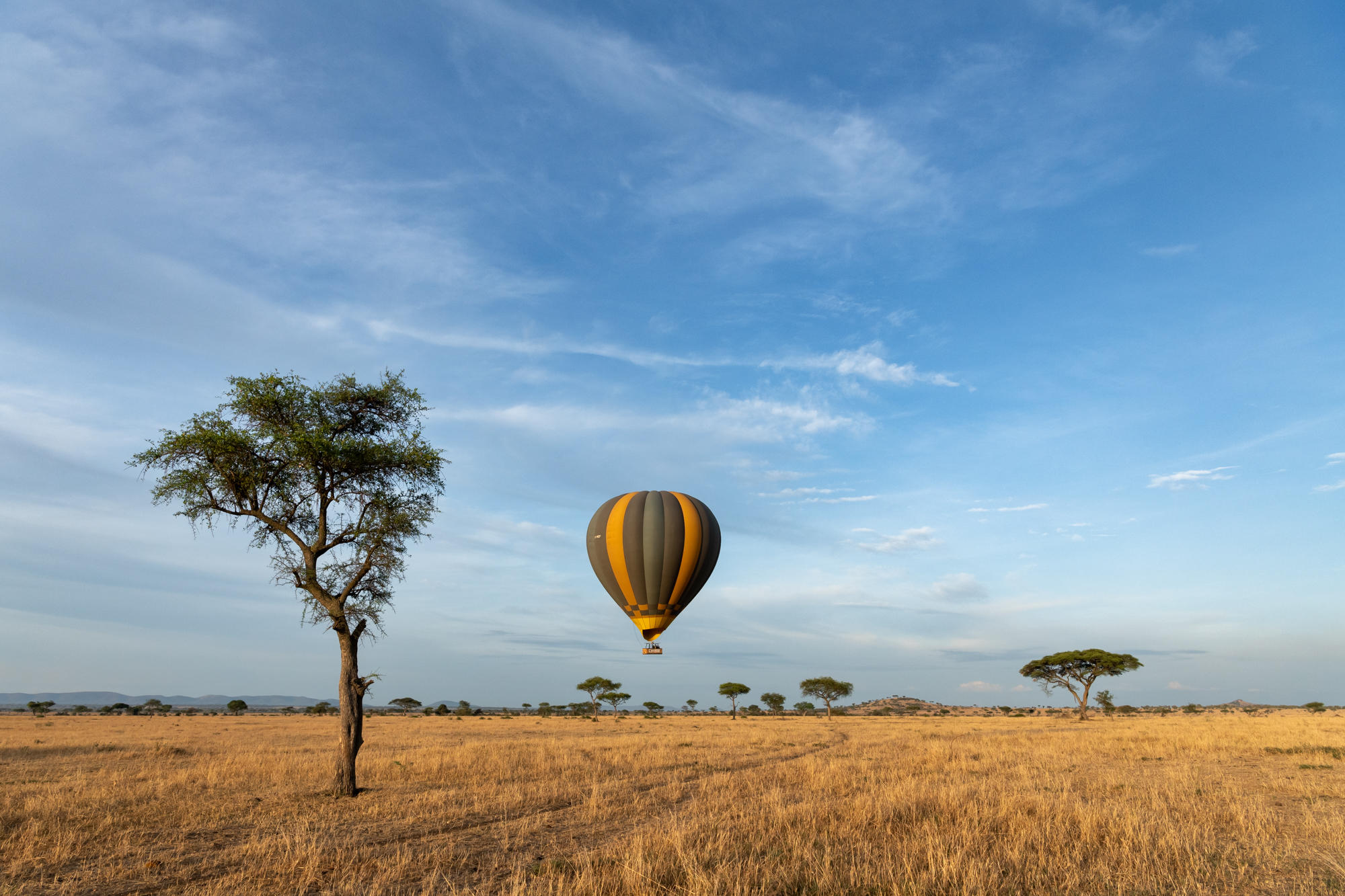 While each day on safari brings new experiences and wildlife encounters, the schedule usually follows a certain rhythm. Of course, this will be adjusted on travel days when you’re moving between lodges and camps. But the following gives you an idea of what to expect.
While each day on safari brings new experiences and wildlife encounters, the schedule usually follows a certain rhythm. Of course, this will be adjusted on travel days when you’re moving between lodges and camps. But the following gives you an idea of what to expect.
Most days will see you waking up just before sunrise, with a quick coffee or tea and snack before heading out with your guide for a morning game drive. The early start is due to the fact that animals are at their most active around sunrise, before the heat of the day sets in. Keep your eyes peeled for lions stalking their prey, herds of elephants ambling to a watering hole and graceful giraffes nibbling the treetops.
After a couple of hours immersed in the bush, you'll return to your camp or lodge for a hearty breakfast and time to relax, swim or nap in your tent. Lunch is then served, followed by an afternoon game drive to spot elusive leopards, cheetahs and hyenas emerging for the evening hunt. This usually ends with sundowner drinks at a scenic viewpoint before heading back to camp.
In the evening, guests typically gather around the campfire to reflect on the day’s adventures, either before or after dinner is served. If you can stay awake until darkness fully sets in, there’s the opportunity for some incredible stargazing before retiring to bed early, ready to do it all again the next day.
It’s important to note that some camps/lodges will interchange game drives with other activities, such as nature walks and village visits, or these will be offered in addition throughout the day. Some destinations also allow for night drives or are located near hot air balloon launching sites for those seeking a bird’s eye view of their destination at sunrise.
Weather
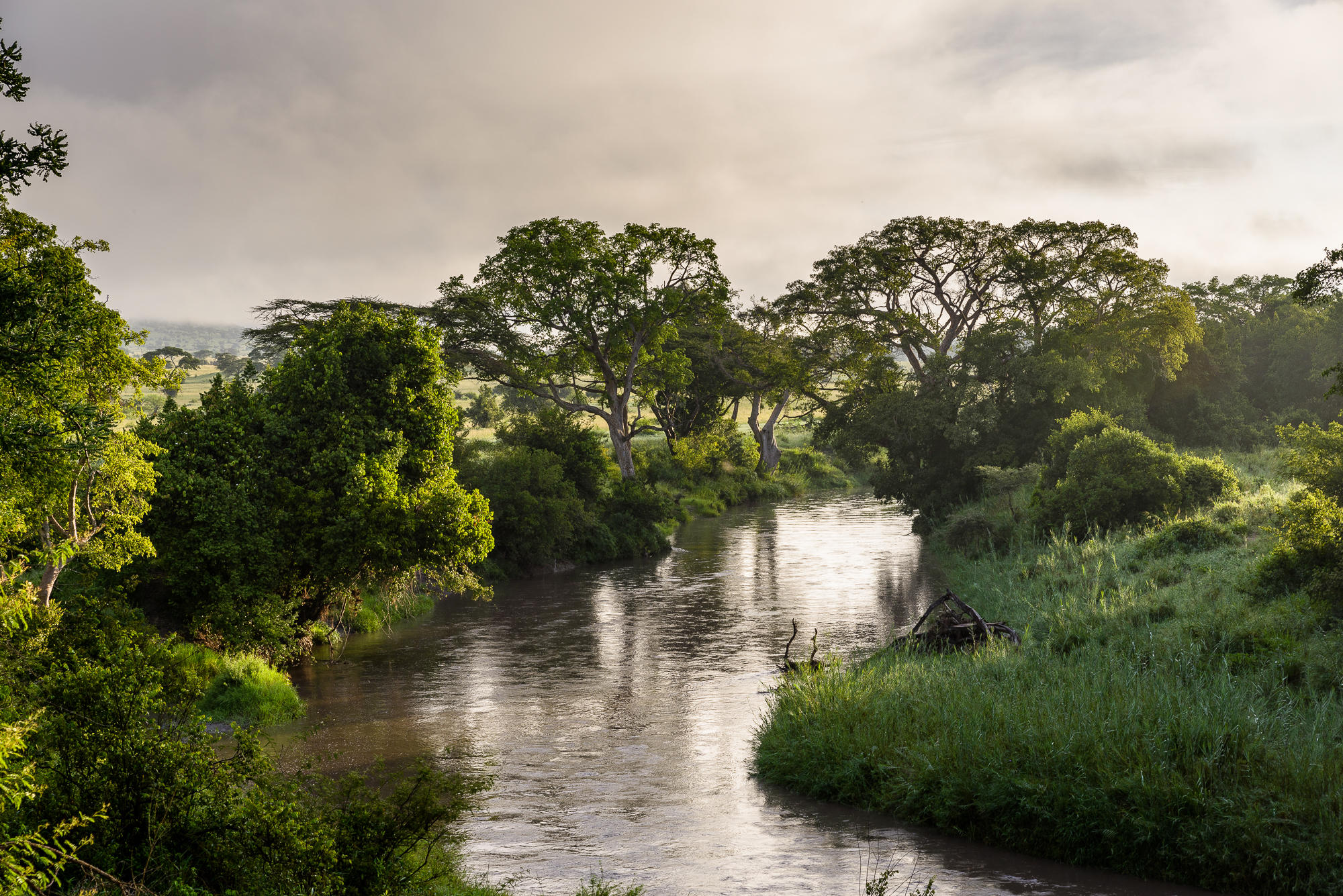 The weather you can expect on safari in Africa can vary significantly, depending on the specific region and time of year you are visiting. In East Africa, which includes popular safari destinations like Kenya and Tanzania, the climate is generally warm and dry, with daytime temperatures ranging from the mid-20s to low 30s Celsius (high 70s to high 80s Fahrenheit).
The weather you can expect on safari in Africa can vary significantly, depending on the specific region and time of year you are visiting. In East Africa, which includes popular safari destinations like Kenya and Tanzania, the climate is generally warm and dry, with daytime temperatures ranging from the mid-20s to low 30s Celsius (high 70s to high 80s Fahrenheit).
There are two distinct rainy seasons - the "short rains" in November/December and the "long rains" from March to May. These rainy periods see brief downpours in the afternoons amidst otherwise sunny weather and are generally known as the “green seasons”.
The dry season from July to October is an ideal time for safaris, as the lack of rain causes vegetation to thin out, making wildlife easier to spot. This is also the most popular time to visit, with lodge and camp prices rising accordingly due to the increased demand.
Southern Africa's safari hotspots like South Africa, Botswana, Namibia and Zimbabwe experience hot, wet summers from November to March and cooler, dry winters from May to August. Generally speaking, the dry months are considered the best time for wildlife viewing, for the same reasons mentioned above.
In contrast, the wet season brings lush, dense foliage that can make spotting wildlife more challenging, although it does attract an abundance of migratory birdlife. Many animals opt to have their young during this period, so there are definite perks to a “green season” safari. As this is a less popular time to visit, lodge and camp prices tend to drop accordingly.
Wildlife encounters
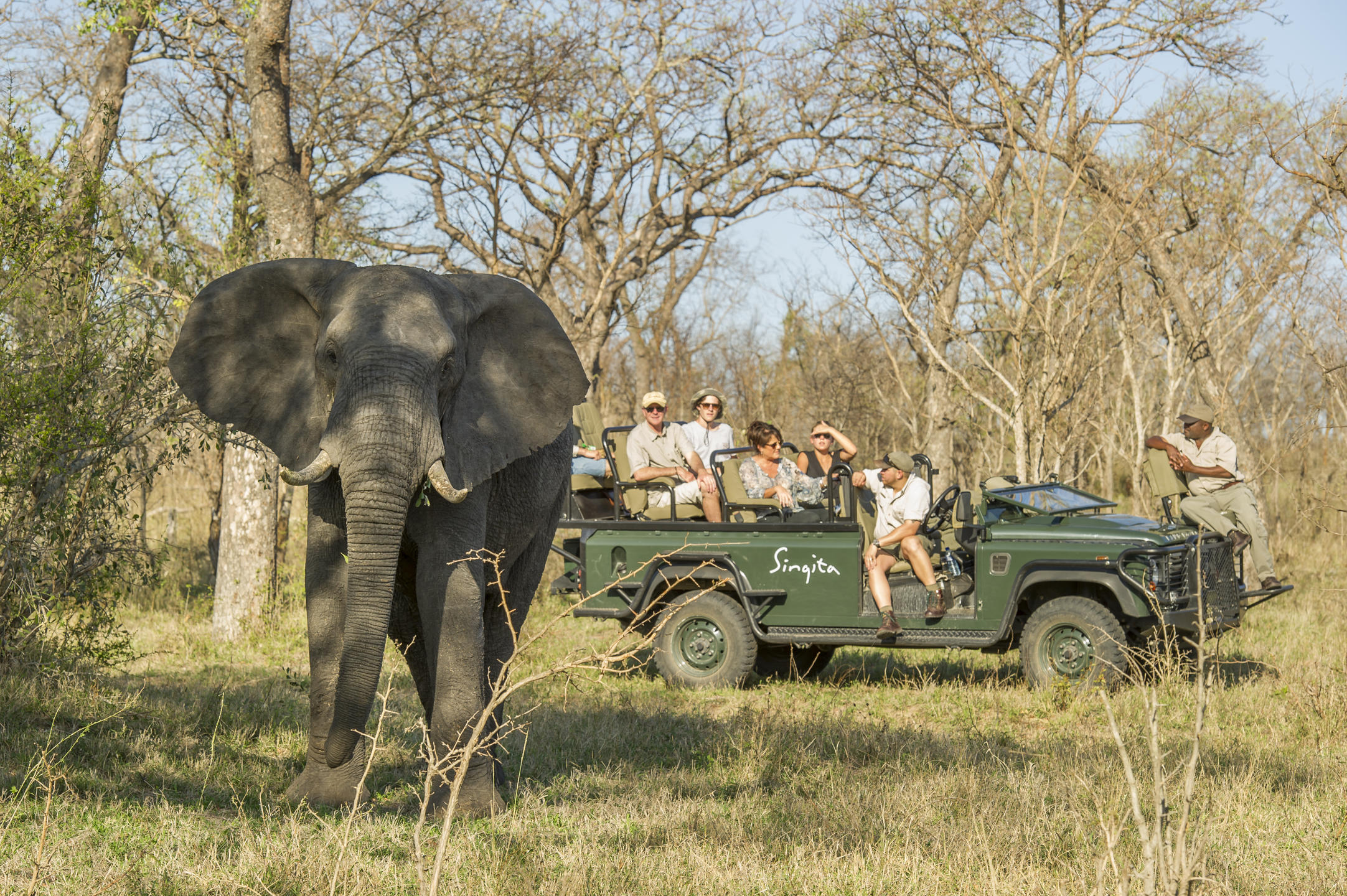 On any African safari, you can expect to encounter a wide variety of wildlife, particularly during morning and evening game drives when animals are most active. You'll likely see a mix of predators like lions and (if you’re lucky) leopards, as well as herbivores like giraffes and zebras grazing on the plains. Elephants are abundant in many of Africa’s wildlife reserves and parks, usually spotted in herds with a matriarch at the helm.
On any African safari, you can expect to encounter a wide variety of wildlife, particularly during morning and evening game drives when animals are most active. You'll likely see a mix of predators like lions and (if you’re lucky) leopards, as well as herbivores like giraffes and zebras grazing on the plains. Elephants are abundant in many of Africa’s wildlife reserves and parks, usually spotted in herds with a matriarch at the helm.
For many families visiting Africa on safari, ticking off the “Big Five” is a bucket-list experience. This collection of animals includes lions, leopards, rhinos, elephants and buffalos - if you see them all in one trip, you’re incredibly lucky! The birdlife is also prolific, particularly during the “green season” when many migratory species arrive from Europe.
It’s worth noting that wildlife sightings are unpredictable - this is one of the reasons why going on safari is such a thrilling experience compared to visiting the zoo! The advantage of doing game drives with a local guide is that they will use their knowledge of animal behaviour and experience in the bush to help find animals that might be tricky to locate on your own.
Looking for more information on family adventure planning in Africa before you head off on safari?
Connect with a Safari Expert

 1-321-766-6821
1-321-766-6821 
